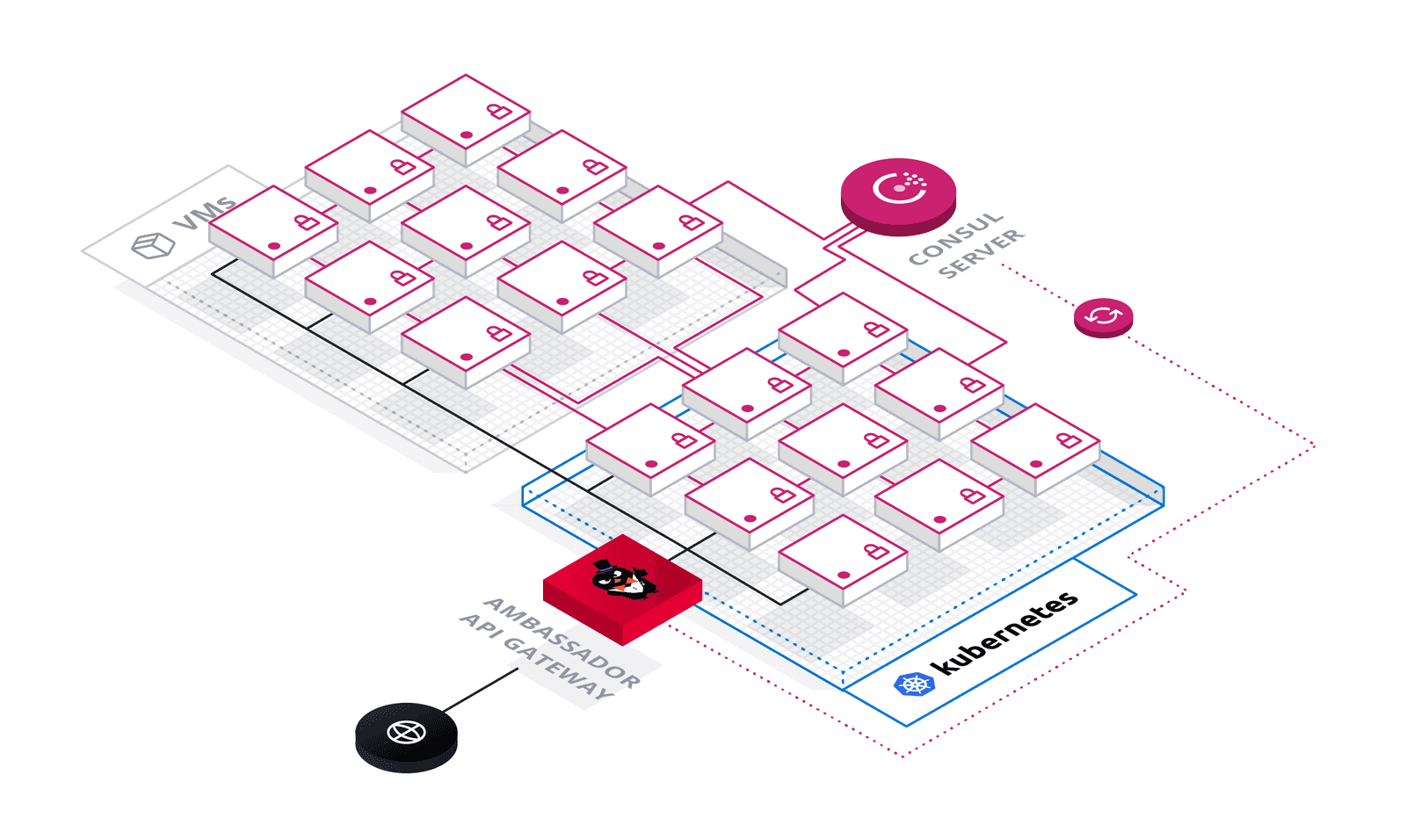DocsEmissary-ingress
Deployment architecture
Deployment architecture
Emissary-ingress can be deployed in a variety of configurations. The specific configuration depends on your data center.
Public cloud
If you're using a public cloud provider such as Amazon, Azure, or Google, Emissary-ingress can be deployed directly to a Kubernetes cluster running in the data center. Traffic is routed to Emissary-ingress via a cloud-managed load balancer such as an Amazon Elastic Load Balancer or Google Cloud Load Balancer. Typically, this load balancer is transparently managed by Kubernetes in the form of the LoadBalancer service type. Emissary-ingress then routes traffic to your services running in Kubernetes.
On-Premise data center
In an on-premise data center, Emissary-ingress is deployed on the Kubernetes cluster. Instead of exposing it via the LoadBalancer service type, Emissary-ingress is exposed as a NodePort. Traffic is sent to a specific port on any of the nodes in the cluster, which route the traffic to Emissary-ingress, which then routes the traffic to your services running in Kubernetes. You'll also need to deploy a separate load balancer to route traffic from your core routers to Emissary-ingress. MetalLB is an open-source external load balancer for Kubernetes designed for this problem. Other options are traditional TCP load balancers such as F5 or Citrix Netscaler.
Hybrid data center
Many data centers include services that are running outside of Kubernetes on virtual machines. For Emissary-ingress to route to services both inside and outside of Kubernetes, it needs the real-time network location of all services. This problem is known as "service discovery" and Emissary-ingress supports using Consul. Services in your data center register themselves with Consul, and Emissary-ingress uses Consul-supplied data to dynamically route requests to available services.
Hybrid on-premise data center
The diagram below details a common network architecture for a hybrid on-premise data center. Traffic flows from core routers to MetalLB, which routes to Emissary-ingress running in Kubernetes. Emissary-ingress routes traffic to individual services running on both Kubernetes and VMs. Consul tracks the real-time network location of the services, which Emissary-ingress uses to route to the given services.







